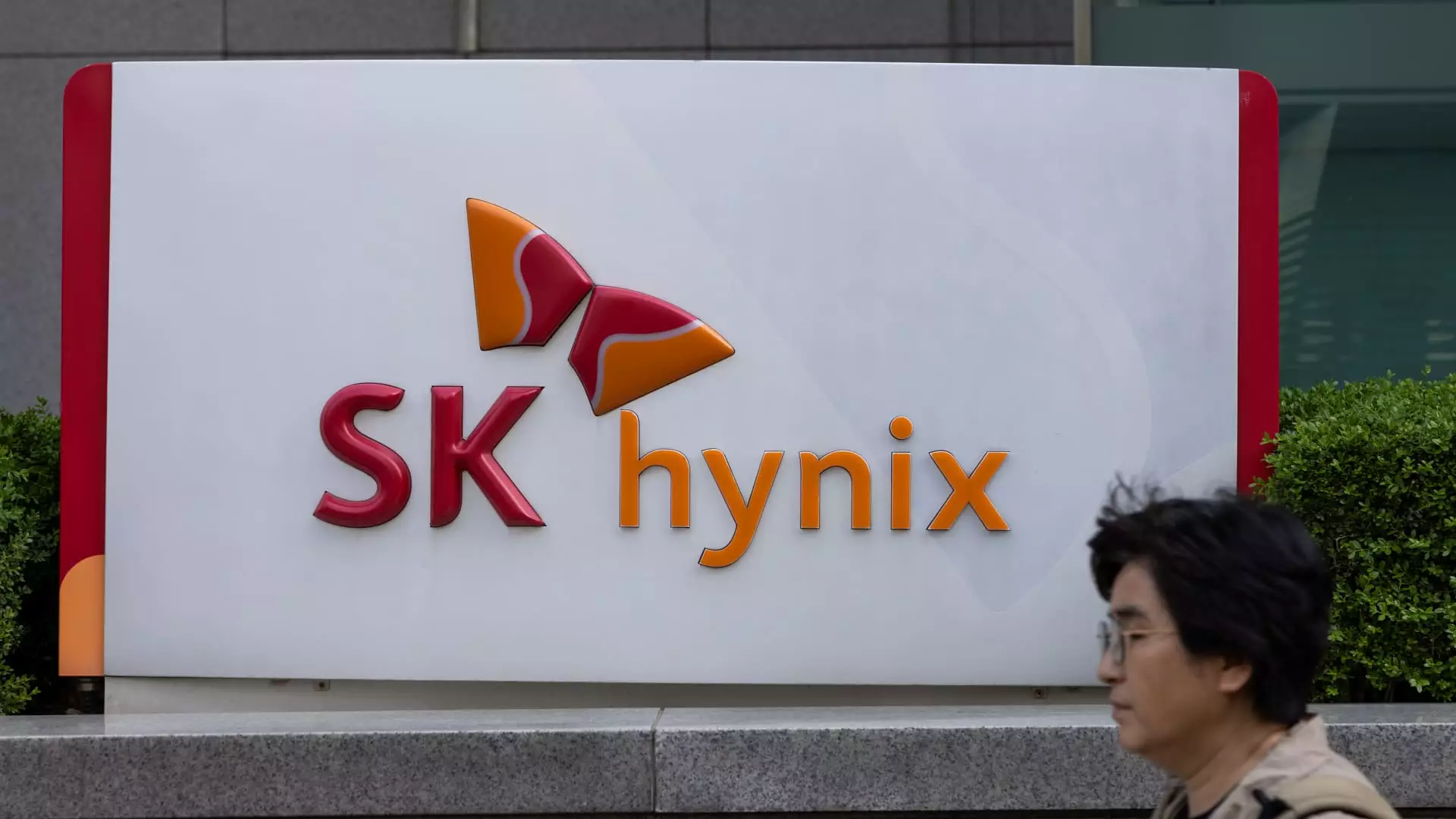In a remarkable turn of events for the semiconductor landscape, South Korea’s SK Hynix reported unprecedented quarterly results driven primarily by robust sales in high bandwidth memory (HBM)—a critical component for generative AI applications. As the company unveiled its fourth-quarter results, it marked a significant milestone in its financial history, showcasing a phenomenal year-on-year increase in revenue. The results illustrated the burgeoning demand for memory solutions driven by the proliferation of artificial intelligence technologies, particularly in high-performance server applications. However, despite this stellar performance, the company faced a notable decline in its stock value on the trading floor, leading to speculations about impending market uncertainties.
The stock market response was notably lukewarm, with SK Hynix shares dipping by 2.7%. This downturn occurred as CFO Kim Woohyun expressed caution regarding future memory demand, particularly looking toward 2025. The presence of high inventory levels among PC and smartphone manufacturers, coupled with enhanced trade policies and geopolitical tensions, painted a less than rosy picture for the chipmaker’s prospects. While revenue for the October-December period surged to 19.77 trillion won (approximately $13.7 billion), suggestions of potential inventory adjustments raised alarms among investors.
The financial figures reveal a staggering 75% increase in revenue compared to the same quarter the previous year, backed by an exceptional operating profit growth of 2,236%. However, the dual pressures of external market conditions and internal inventory strategies raised questions about the sustainability of such growth in the coming years.
The earnings report from SK Hynix highlighted critical developments in the memory chip industry, particularly in relation to HBM technology which significantly enhances processing speeds and efficiency. This technology represents a paradigm shift in semiconductor manufacturing, enabling the storage of data on vertically stacked chips, thereby efficiently utilizing space and reducing power consumption. The company’s prominent role as a supplier to NVIDIA, a leading U.S. AI chip designer, underscores its strategic importance within a rapidly evolving AI ecosystem.
SK Hynix emphasized that the memory sector is undergoing a critical transition. As the market shifts from commodity-driven practices focused primarily on volume and price, there is an increasing emphasis on high-quality, performance-oriented products. This transition indicates the increasing sophistication of consumer and industrial demands, aligning technological development with practical applications in AI, gaming, and high-performance computing.
Despite expressing cautious optimism for continued growth in HBM and DRAM sales, SK Hynix acknowledges the uncertainties looming on the horizon. The prospect of a possible increase in capital expenditure in 2025 hints at the company’s strategy to adapt and invest in future technologies that meet evolving market needs. By targeting large technology firms engaged in AI development, SK Hynix positions itself to capitalize on the anticipated growth in both AI-driven server markets and consumer electronics.
The management team forecasted a moderate growth trajectory for memory demands, with DRAM expected to grow in the mid to high teens while NAND memory is forecasted to rise in the low teens. This nuanced outlook speaks not only to the prospects of robust sales but also highlights the necessity for adaptive strategies in response to external pressures such as market volatility, trade dynamics, and evolving consumer preferences.
As SK Hynix charts its course in a competitive landscape filled with both promise and challenges, its ability to navigate these dynamics will be crucial to maintaining its position as a leader in the global memory chip market. The company’s commitment to innovation in HBM technology and its strategic focus on AI applications signal a proactive approach to harnessing emerging market trends. However, as it faces potential headwinds related to demand and geopolitical factors, SK Hynix must remain vigilant and flexible, ensuring that it adapts to changes in the industry while driving forward its ambitious vision for the future.


Leave a Reply